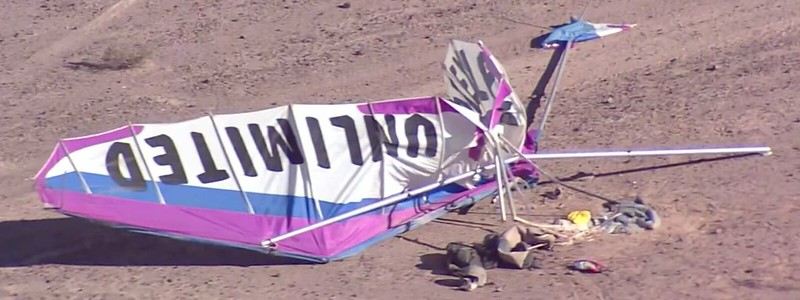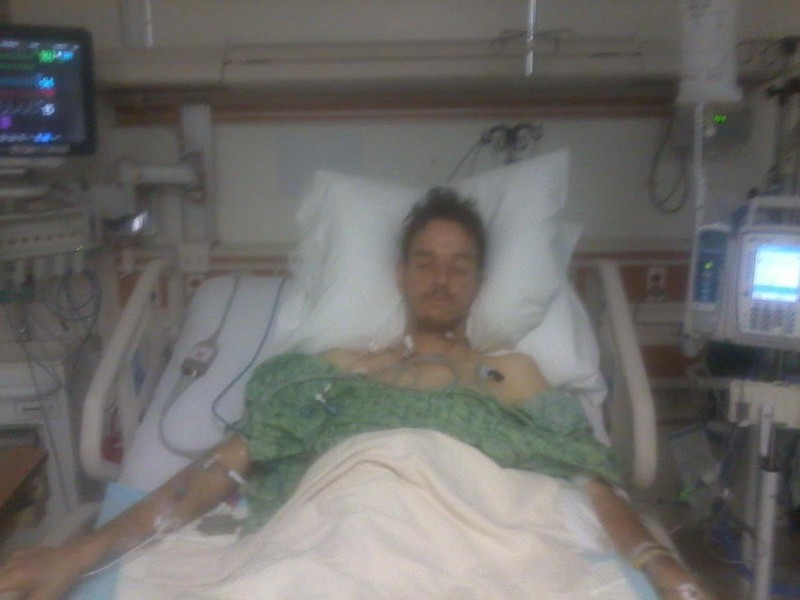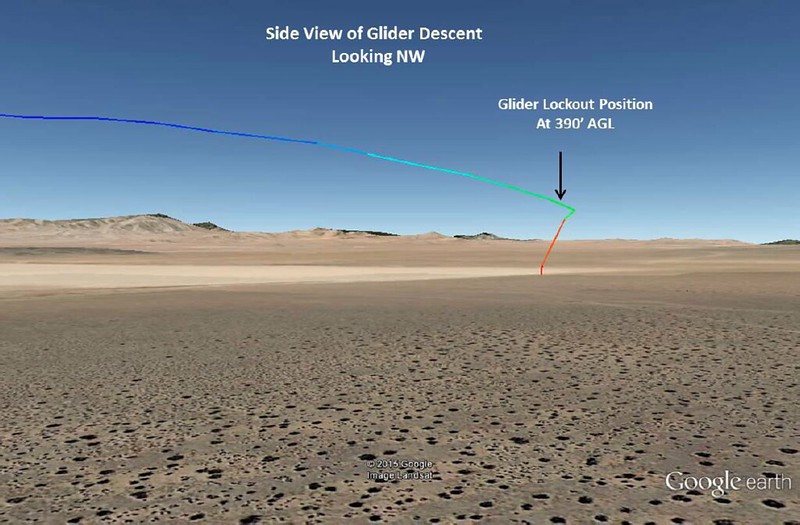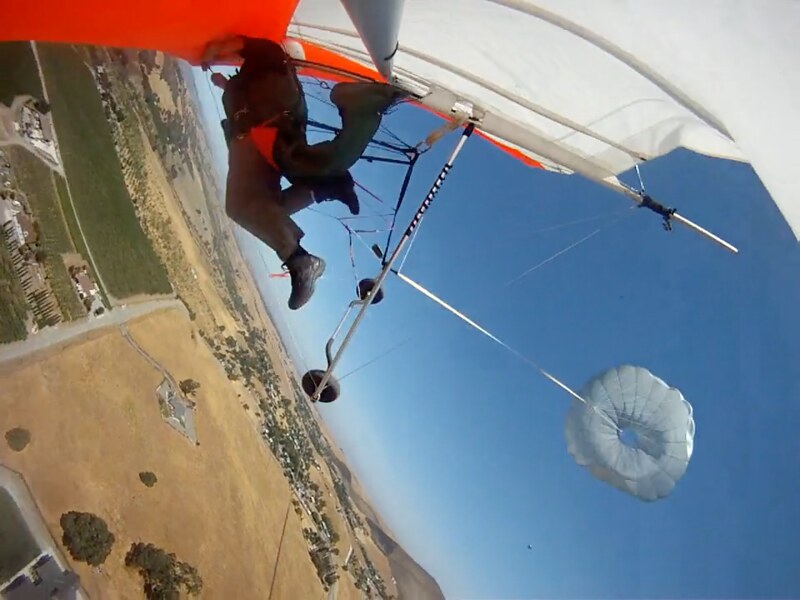Things are pretty damn interesting already.
Some (more easily readable) excerpts - focusing on the nuts and bolts stuff:
In May 2015, plaintiff filed a complaint alleging a single negligence cause of action. In his complaint, plaintiff contended that defendants owed him a reasonable duty of care in maintaining the equipment used in hang gliding and in selecting, hiring, and supervising employees of the hang gliding company. In that respect, plaintiff argued that defendants breached that duty by failing to keep and maintain the equipment in a safe operable condition and by "increase[ing] the risk of injury . . . beyond the inherent risks associated with hang gliding."
Plaintiff alleged the following facts. In November 2013, plaintiff entered defendants' property to hang glide. Plaintiff had purchased 20 "tows" from defendants. A tow consisted of attaching the hang glider to a cable which was operated by a hydraulic winch system. The tow cable was operated mechanically to pull the hang glider into the sky. The hang glider was attached to the tow cable by a ring and release pin. On one of plaintiff's tows, plaintiff attempted to release himself but the pin failed to release and the hang glider remained attached to the tow cable. Plaintiff tried several times to release himself but was unable to do so. The auto release mechanism did not release plaintiff because it had been disengaged. Plaintiff crashed to the ground, resulting in serious injuries.
...
To support their summary judgment motion, defendants submitted plaintiff's deposition testimony to establish the following facts. When deciding whether to start hang gliding, plaintiff researched the sport of hang gliding. He was generally aware of the risks involved. Denevan conducted plaintiff's initial hang gliding orientation. The orientation consisted of a video about hang gliding, an overview of the lessons offered, and an explanation of the different pilot ratings. The next day, plaintiff began to take his first hang gliding lessons, which consisted of basic instruction and lasted four to five hours. After approximately 13 lessons, plaintiff was introduced to the tow machine. Plaintiff eventually achieved the “Hang 1” pilot designation. Thereafter, plaintiff purchased a hang glider, a hang gliding harness, a tow release, and a parachute.
Plaintiff explained that one of the safety features of a hang glider was an auto release mechanism. The auto release feature would cause the hang glider to disconnect from the tow system when certain height or directional limits were reached. Plaintiff testified that on the day of the accident, Johnson noted that the auto release was disengaging the tow cable before plaintiff reached the prescribed release point. According to plaintiff, Johnson advised that the auto release could be lengthened, which would "basically disable it." Johnson also advised plaintiff that he could instead disconnect the auto release when it got closer to the release point. On the day of the accident, Johnson instructed plaintiff to disconnect the auto release. Per that instruction, plaintiff disconnected the auto release before reaching his release point. After reaching the prescribed height, plaintiff attempted to manually release the tow cable. Plaintiff testified that he pulled multiple times on the release but it failed to disconnect. Plaintiff worried that he would soon veer too far on the tow line, be pulled down, and lose control of the hang glider. Plaintiff removed both hands from the control bar to pull on the release mechanism. Having removed both hands from the control bar, plaintiff lost control of the hang glider and crashed.
...
Plaintiff noted that he was a beginner pilot, that plaintiff had informed Johnson that he was having trouble with his release mechanism, and that Johnson did not follow up on or rectify the release issues. Plaintiff also noted that he informed Denevan on the morning of the incident that he was having release problems. Finally, plaintiff pointed to the fact that Johnson had instructed him to disconnect the auto release safety mechanism. Plaintiff further pointed to Denevan's deposition testimony, in which Denevan stated that he would never instruct a pilot to disengage the auto release and that it was a violation of company policy to instruct a pilot to do so.
Defendants argued that plaintiff essentially admitted all of defendants' undisputed facts in support of summary judgment. In addition, defendants asserted that plaintiff's argument that the auto release device caused the accident was not supported by any admissible evidence. Finally, defendants argued that plaintiff failed to establish, through expert testimony, whether defendants' conduct fell below any standard of care or otherwise increased the risks inherent to hang gliding.
...
We first address primary assumption of risk. In the trial court, defendants disputed that they increased the inherent risks of hang gliding principally by disputing causation--that there was "no admissible evidence that the auto release mechanism had anything to do with plaintiff's accident." On the contrary, plaintiff testified to the basic mechanics of the auto release mechanism, as did Denevan. From their descriptions of the auto release, a rational jury could infer that disconnecting the auto release was related to plaintiff's accident, insofar as disengaging the auto release forced plaintiff to rely solely on the manual release. Plaintiff testified that just "prior to reaching the release point, when the auto release would become tight enough that it was about to release [him]" he would disconnect the auto release safety device to attain his desired release height. Plaintiff said he did so at the direction of his instructor. For his part, Denevan described the auto release as a safety mechanism designed to release the pilot if the manual release system failed. Denevan also noted that under no circumstances would he direct a pilot to disengage the auto release, that disengaging the auto release would be "foolish," and that instructing a pilot to disengage the auto release would be a violation of company policy.
...
Jimenez is instructive in the instant case. Here, as previously noted, plaintiff produced testimony from Denevan that there was never a circumstance where a pilot should disengage the auto release and he would never instruct a pilot to do so. Plaintiff further produced testimony that he was instructed to disconnect the auto release on his hang glider and that he did so in accordance with those instructions. Finally, plaintiff testified that because he disconnected his auto release, he was forced to rely exclusively on the manual release to disengage from the tow cable. Based on the foregoing, as in Jimenez, a jury could reasonably find: (1) Denevan's testimony established a standard that under no circumstances should the auto release be disengaged; (2) the instruction provided to plaintiff did not meet that standard; and (3) the instructed use of the auto release was an extreme departure from the ordinary standard of conduct, as expressed in Denevan's deposition testimony.
...plaintiff argued that defendants breached that duty by failing to keep and maintain the equipment in a safe operable condition...
You can't keep and maintain cheap bent pin, two-string, Birrenator crap posing for tow equipment in safe operable condition 'cause it wasn't ever designed to be safe and operable in the first place.
"...beyond the inherent risks associated with hang gliding."
- 99 percent of the inherent risks associated with hang gliding are deliberately engineered into the sport. So how does one make any sense of that statement?
- I contend that, for all intents and purposes, there are no inherent "RISKS" in hang gliding. That's corporatelawyer-speak to supply get-out-of-jail-free cards for negligence and incompetence. Gliders don't ever crash and people don't ever get hurt because of inherent risks. They get killed and mangled because people fuck up. We don't launch because the chances of us breaking an arm are only one in a thousand. We launch because we know we're capable of maintaining solid safety margins at all times. We don't MANAGE risks - we ELIMINATE them.
Plaintiff alleged the following facts.
If they're facts - and they are - they don't need to be alleged, right?
In November 2013...
2013/11/10.
...plaintiff entered defendants' property to hang glide.
Should've done his homework first.
Plaintiff had purchased 20 "tows" from defendants.
And had purchased tow "equipment" from defendants.
A tow consisted of attaching the hang glider to a cable...
- A nice well maintained and inspected steel cable because:
Manned Kiting
The Basic Handbook of Tow Launched Hang Gliding
Daniel F. Poynter
1974
"The greatest dangers are a rope break or a premature release." - Richard Johnson
- We don't call them cables. We call them towlines.
...which was operated by a hydraulic winch system.
- Should've had a person operating the hydraulic winch system to get the glider powered up to altitude safely.
- With no guillotine at its end because of...
Steve Davy - 2013/09/06 01:07:07 UTC
I talked with Pat about Lin's little adventure and what's been done to avoid a repeat.
When asked if a guillotine had been installed he expressed that he didn't like/trust the added complexity.
...all the lethal additional complexity.
The tow cable was operated mechanically to pull the hang glider into the sky.
Beats the hell out of it being operated mechanically to pull the hang glider into the dry lakebed.
The hang glider was attached to the tow cable by a ring and release pin.
Where was the focal point of this safe towing system? The one that automatically and infallibly releases you from tow before you can get into too much trouble?
On one of plaintiff's tows, plaintiff attempted to release himself but the pin failed to release and the hang glider remained attached to the tow cable.
One of the big inherent risks of hang glider towing. Way behind the hang glider not remaining attached to the tow cable however.
Plaintiff tried several times to release himself but was unable to do so.
Yeah?
http://www.hanggliding.org/viewtopic.php?t=30306
Non-fatal crash in Tres Pinos, CA
Scott Howard - 2014/11/06 16:06:31 UTC
...the best i can do for now is a clip of the day b4 when i told the instructor about release problem. (still released by normal method but had to yank 3 times on release to get it to release.)
Maybe he should've tried several more times. You should always expect better results when doing the same things over and over again.
The auto release mechanism did not release plaintiff because it had been disengaged.
Well then obviously using a Tad-O-Link. And he didn't even think of using his razor-sharp cutting tool to slash through his lines in an instant? How come we're not hearing anything about that issue?
Plaintiff crashed to the ground, resulting in serious injuries.
When the guy dies it's as a result of suffering fatal injuries.
To support their summary judgment motion, defendants submitted plaintiff's deposition testimony to establish the following facts.
Since when did anybody on the Mission crew start caring about facts?
When deciding whether to start hang gliding, plaintiff researched the sport of hang gliding.
Not on Kite Strings obviously.
He was generally aware of the risks involved.
Just didn't grasp the fact that having to yank three times on release to get it to release was an actual issue because the stuff he was using was all state-of-the-art - and easily reachable on top of that.
Denevan conducted plaintiff's initial hang gliding orientation.
Which is actually a major disorientation.
The orientation consisted of a video about hang gliding...
This one?:
http://vimeo.com/68791399
The one that so clearly illustrates the insane level of risk associated with...
109-15221
http://farm9.staticflickr.com/8615/16487544910_41f57852ac_o.png
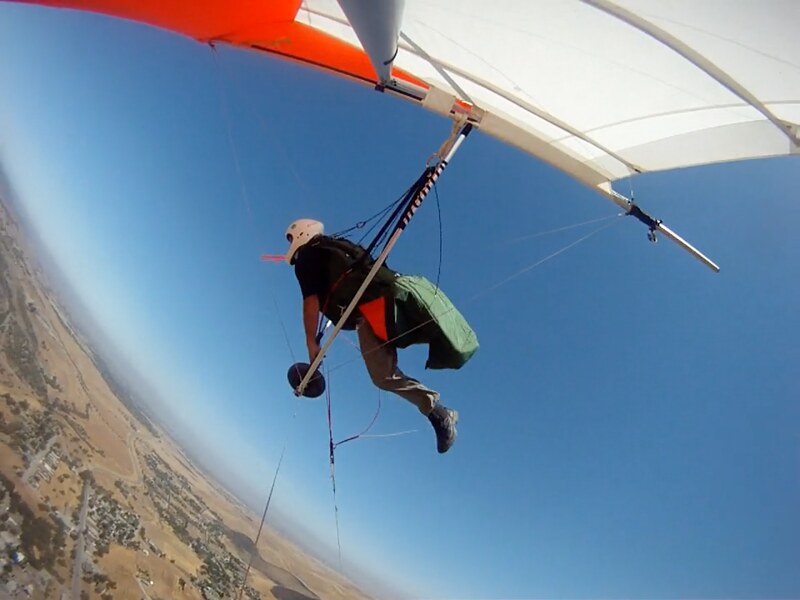
...attempting to use a previous generation state-of-the-art three string release?


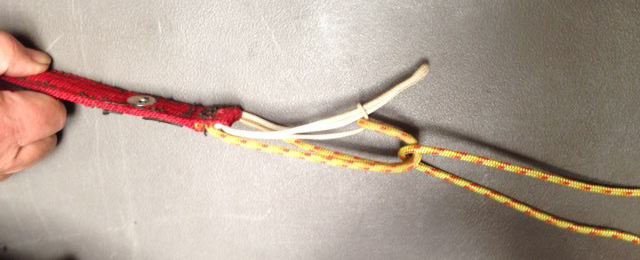
...an overview of the lessons offered, and an explanation of the different pilot ratings.
Did we cover One?
The United States Hang Gliding and Paragliding Association, Inc. - 2017/03/22
Standard Operating Procedure
12. Rating System
02. Pilot Proficiency System
06. Beginner Hang Gliding Rating (H1)
-C. Recommended Operating Limitations for Beginner Pilots flying solo:
01. Should exceed these limitations only after demonstrating complete mastery of the required Beginner tasks (above), and only after acquiring a full understanding of the potential problems and dangerous situations which may arise from exceeding these limitations.
02. It is highly recommended that all flights be made under the direct supervision of a USHPA Certified Basic or Advanced Instructor.
03. Should fly only in winds of 12 mph or less, with gust differential of 5 mph or less.
04. Should foot launch only on slopes of 3:1 to 6:1, where wind is within 15° of being straight up the slope.
05. Should launch only when there are no obstructions within 60° to either side of intended flight path, and when pilot may fly straight out from launch to landing with no need to maneuver and no possibility of over-flying the landing area.
06. Should maintain flight heading within 15° of directly into the wind.
07. Should fly appropriate sites so as to maintain altitude below 100' AGL.
The next day, plaintiff began to take his first hang gliding lessons, which consisted of basic instruction and lasted four to five hours. After approximately 13 lessons, plaintiff was introduced to the tow machine.
How 'bout the abort tow machine? Not until after you've scored your Three?
Plaintiff eventually achieved the "Hang 1" pilot designation.
I think I was good after my first day.
Thereafter, plaintiff purchased a hang glider, a hang gliding harness, a tow release...
Or something being advertised as a tow release - state-of-the-art of course.
...and a parachute.
- Why does a Hang One - who's supposed to stay under a hundred feet - need a parachute? (And we can see just how much good it did him on that last one.)
- How much did he pay for the parachute and how much did he pay for the state-of-the-art tow release?
Plaintiff explained that one of the safety features of a hang glider was an auto release mechanism.
Anything that functions independently of the pilot's decisions. You just can't get any safer than that.
The auto release feature would cause the hang glider to disconnect from the tow system when certain height or directional limits were reached.
Before they can get into too much trouble. I so do hope this feature soon becomes commercially available.
Plaintiff testified that on the day of the accident, Johnson noted that the auto release was disengaging the tow cable before plaintiff reached the prescribed release point. According to plaintiff, Johnson advised that the auto release could be lengthened, which would "basically disable it."
Disable an element of state-of-the-art equipment? One that automatically assesses the situation and blows you off tow if it determines remaining on wouldn't be in the best interest of the glider's passenger? My gawd, what were they THINKING?! Trying to trade safety for convenience - if you want my opinion.
Johnson also advised plaintiff that he could instead disconnect the auto release when it got closer to the release point.
You mean like:
020-10819
http://farm9.staticflickr.com/8665/16052643454_ef408619ca_o.png

On the day of the accident...
The what?
...Johnson instructed plaintiff to disconnect the auto release. Per that instruction, plaintiff disconnected the auto release before reaching his release point.
And we all know how that went. Let this be a lesson to all you people of varying ages.
After reaching the prescribed height, plaintiff attempted to manually release the tow cable. Plaintiff testified that he pulled multiple times on the release but it failed to disconnect.
Just like Dr. Trisa Tilletti always says...
Dr. Trisa Tilletti - 2012/06
We could get into details of lab testing weak links and bridles, but this article is already getting long. That would be a good topic for an article in the future. Besides, with our backgrounds in formal research, you and I both know that lab tests may produce results with good internal validity, but are often weak in regard to external validity--meaning lab conditions cannot completely include all the factors and variability that exists in the big, real world.
I'll bet the tow pressure varied in the big, real world much more than could've been predicted and/or simulated in lab conditions.
Plaintiff worried that he would soon veer too far on the tow line...
VEER? What the fuck does that mean? We never heard a scrap of a suggestion that the glider started tracking in inch to either side of the line straight toward the turnaround pulley.
...be pulled down, and lose control of the hang glider.
So where's the weak link in this situation and why isn't it breaking when it's supposed to?
Plaintiff removed both hands from the control bar to pull on the release mechanism.
So? How much worse than removing both hands from the control bar than removing just one? And what business does a goddam under forty hour Hang One have touching the control bar in the first place?
Having removed both hands from the control bar, plaintiff lost control of the hang glider and crashed.
But he'd gotten off tow so the crash couldn't possibly have been very serious, right?
Plaintiff noted that he was a beginner pilot, that plaintiff had informed Johnson that he was having trouble with his release mechanism, and that Johnson did not follow up on or rectify the release issues.
So the fuck what? It was state-of-the-art equipment so the issues couldn't possibly have been with the release. The problem was obviously that the beginner pilot didn't start pulling with both hands soon enough.
Plaintiff also noted that he informed Denevan on the morning of the incident that he was having release problems.
So?
http://ozreport.com/forum/viewtopic.php?t=22660
What can be learned from this "scooter" towing accident?
Jim Rooney - 2011/02/06 18:35:13 UTC
I don't really have anything against the Kotch release.
I think it's big, clunky and expensive, but I'm sure it works fine.
I'm also sure it has it's problems just like any other system. The minute someone starts telling me about their "perfect"system, I start walking away.
Standard Operating Procedure is to start walking away from anyone who starts telling you about problems with your cheap shit long track record state-of-the-art equipment.
Finally, plaintiff pointed to the fact that Johnson had instructed him to disconnect the auto release safety mechanism. Plaintiff further pointed to Denevan's deposition testimony, in which Denevan stated that he would never instruct a pilot to disengage the auto release and that it was a violation of company policy to instruct a pilot to do so.
- We have one of the most viral videos in the history of the sport to prove beyond a shred of a reasonable doubt otherwise.
- Absolutely. They've always had that posted on their website. Everybody knows that. Just watch a couple of their instructional videos and you can clearly see everyone from their Hang Zero students to their Advanced recreational flyers not disengaging their auto releases and not ever using their manual backup releases.
- This is absolutely bizarre. I think that at some point very early in the aftermath of this one Pat lied about how they run things and thus painted himself into this corner he's now forced to defend to the bitter end. And the folk who fly there depend on that operation as a major resource and aren't going to say anything to the contrary. But also note that not one of these motherfuckers has posted a video or comment to support this bullshit.
Defendants argued that plaintiff essentially admitted all of defendants' undisputed facts in support of summary judgment.
http://ozreport.com/forum/viewtopic.php?t=24846
Is this a joke ?
Jim Rooney - 2011/08/26 02:44:10 UTC
I find no disagreement in the professional community as to such.
I only find a disconnect when they're talking to the general public, and it always boils down to semantics.
See, we're not confused.
You're searching for an argument and only finding it within yourself.
This btw is one of the main reasons that most of the professionals do not bother with the forums.
Cuz it's generally a bitchfest around here.
Instead of looking for an argument, you may consider listening instead.
In addition, defendants asserted that plaintiff's argument that the auto release device caused the accident was not supported by any admissible evidence.
Admit THIS:
http://4.bp.blogspot.com/-bRrpHNa68iY/UQ6Pv9gRZyI/AAAAAAAAjTg/Hc22bx5122Q/s2048/20943781_BG1.jpg

motherfuckers. Also...
Wills Wing / Blue Sky / Steve Wendt / Ryan Voight Productions - 2007/03
NEVER CUT THE POWER...
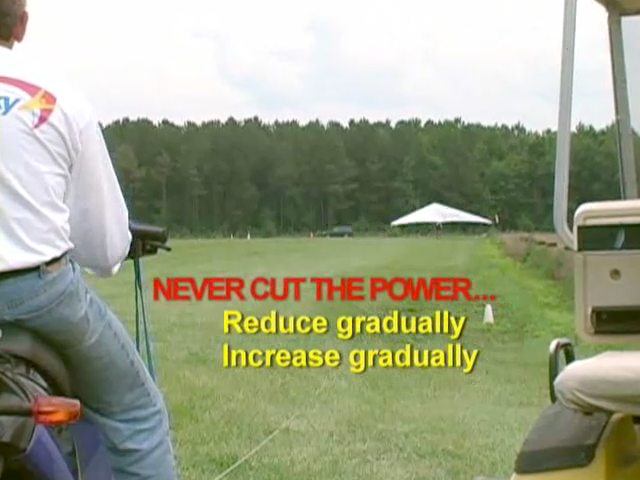
Reduce Gradually
Increase Gradually
Finally, defendants argued that plaintiff failed to establish, through expert testimony, whether defendants' conduct fell below any standard of care or otherwise increased the risks inherent to hang gliding.
You assholes rated him as a fuckin' Hang One and pulled him up into that situation. Shouldn't be too difficult of a case to make.
We first address primary assumption of risk. In the trial court, defendants disputed that they increased the inherent risks of hang gliding principally by disputing causation--that there was "no admissible evidence that the auto release mechanism had anything to do with plaintiff's accident."
We've got tons of evidence about what auto releases do to gliders all the fuckin' time. Y'all will hafta figure out whether or not it's admissible. I'll tell ya one thing though... u$hPa sure doesn't want it - or anything else that smacks of common sense - to be admissible.
On the contrary, plaintiff testified to the basic mechanics of the auto release mechanism, as did Denevan.
- Nose goes up, auto release mechanism kicks in, glider stalls and drops like a brick. Right?
- Wanna know more about this marvelous device from the mouth of its inventor? Check out his Linknife...
http://www.birrendesign.com/LKOpinions.html
Linknife - alternate setup as automatic release
...OPINIONS page.
From their descriptions of the auto release, a rational jury...
...would be excluded from hang gliding altogether until they renounced their rational beliefs and learned to interact in friendly manners with established members of the worlds largest hang gliding community.
...could infer that disconnecting the auto release was related to plaintiff's accident, insofar as disengaging the auto release forced plaintiff to rely solely on the manual release.
Have we established that the manual release is capable of actually functioning as a manual release in common towing scenarios?
Plaintiff testified that just "prior to...
...launching the pilot is required to demonstrate a method a method of establishing that the pilot is hooked in. Look at some Tres Pinos videos and see just how well Mission complies and has its students comply with that most fundamental element of hang gliding safety strategies.
...reaching the release point, when the auto release would become tight enough that it was about to release [him]" he would disconnect the auto release safety device to attain his desired release height.
So defendants are maintaining that the manual release is only actuated in emergency situations prior to reaching the intended release altitude and on the occasions when the auto release fails to function... Right?
Plaintiff said he did so at the direction of his instructor.
His u$hPa certified instructor. Same asshole who almost pile drove Lin Lyons into a nearby neighborhood on this rig five days shy of five months prior... Right?
For his part, Denevan described the auto release as a safety mechanism designed to release the pilot if the manual release system failed.
For his part, Denevan's a lying motherfucker. It's "designed" to blow the glider off tow when it's pitched high and/or away from the direction of the turnaround pulley. What happens to the glider after that is a matter of what was going on with it the instant before that can happen. It can be a good thing but it's a helluva lot more likely to be a bad thing.
Denevan also noted that under no circumstances would he direct a pilot to disengage the auto release, that disengaging the auto release would be "foolish," and that instructing a pilot to disengage the auto release would be a violation of company policy.
Sounds at best like you didn't do very good jobs of communicating this to your student and assessing his suitability for being in this situation. And we know the latter to be the case for a certainty 'cause you put him up there before you'd signed him off as a Two.
Jimenez is instructive in the instant case. Here, as previously noted, plaintiff produced testimony from Denevan that there was never a circumstance where a pilot should disengage the auto release and he would never instruct a pilot to do so. Plaintiff further produced testimony that he was instructed to disconnect the auto release on his hang glider and that he did so in accordance with those instructions.
See video evidence above.
Finally, plaintiff testified that because he disconnected his auto release, he was forced to rely exclusively on the manual release to disengage from the tow cable. Based on the foregoing, as in Jimenez, a jury could reasonably find: (1) Denevan's testimony established a standard that under no circumstances should the auto release be disengaged; (2) the instruction provided to plaintiff did not meet that standard; and (3) the instructed use of the auto release was an extreme departure from the ordinary standard of conduct, as expressed in Denevan's deposition testimony.
Fuckin' exactly.
